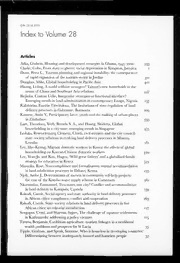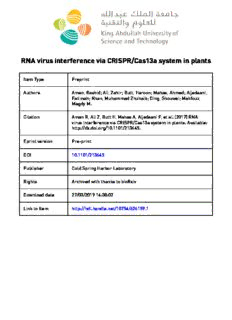
1 RNA virus interference via CRISPR/Cas13a system in plants Rashid Aman , Zahir Ali , Haroon PDF
Preview 1 RNA virus interference via CRISPR/Cas13a system in plants Rashid Aman , Zahir Ali , Haroon
RNA virus interference via CRISPR/Cas13a system in plants Item Type Preprint Authors Aman, Rashid; Ali, Zahir; Butt, Haroon; Mahas, Ahmed; Aljedaani, Fatimah; Khan, Muhammad Zhuhaib; Ding, Shouwei; Mahfouz, Magdy M. Citation Aman R, Ali Z, Butt H, Mahas A, Aljedaani F, et al. (2017) RNA virus interference via CRISPR/Cas13a system in plants. Available: http://dx.doi.org/10.1101/213645. Eprint version Pre-print DOI 10.1101/213645 Publisher Cold Spring Harbor Laboratory Rights Archived with thanks to bioRxiv Download date 21/12/2022 01:48:19 Link to Item http://hdl.handle.net/10754/626159.1 bioRxiv preprint first posted online Nov. 3, 2017; doi: http://dx.doi.org/10.1101/213645. The copyright holder for this preprint (which was not peer-reviewed) is the author/funder. All rights reserved. No reuse allowed without permission. RNA virus interference via CRISPR/Cas13a system in plants Rashid Aman1, 3, Zahir Ali1, 3, Haroon Butt1, 3, Ahmed Mahas1, Fatima Aljedaani1, Muhammad Zuhaib Khan1, Shouwei Ding2, and Magdy Mahfouz1, * 1Laboratory for Genome Engineering, Division of Biological Sciences, 4700 King Abdullah University of Science and Technology, Thuwal 23955-6900, Saudi Arabia, and 2Center for Plant Cell Biology, Department of Plant Pathology and Microbiology, University of California, Riverside, CA 92521 *Corresponding author: Magdy M. Mahfouz (magdy.mahfouz@kaust.edu.sa) 3These authors contributed equally to this work Key words: CRISPR/Cas systems, CRISPR/Cas13a, virus interference, RNA interference, molecular immunity, RNA knockdown, transcriptome regulation Running title: CRISPR/Cas13a system mediates interference against an RNA virus in planta 1 bioRxiv preprint first posted online Nov. 3, 2017; doi: http://dx.doi.org/10.1101/213645. The copyright holder for this preprint (which was not peer-reviewed) is the author/funder. All rights reserved. No reuse allowed without permission. Abstract: CRISPR/Cas systems confer immunity against invading nucleic acids and phages in bacteria and archaea. CRISPR/Cas13a (known previously as C2c2) is a class 2 type VI-A ribonuclease capable of targeting and cleaving single stranded RNA (ssRNA) molecules of the phage genome. Here, we employ CRISPR/Cas13a to engineer interference with an RNA virus, Turnip Mosaic Virus (TuMV), in plants. CRISPR/Cas13a produced interference against green fluorescent protein (GFP) expressing TuMV in transient assays and stable overexpression lines of Nicotiana benthamiana. crRNAs targeting the HC-Pro and GFP sequences exhibited better interference than those targeting other regions such as coat protein (CP) sequence. Cas13a can also process pre-crRNAs into functional crRNAs. Our data indicate that CRISPR/Cas13a can be used for engineering interference against RNA viruses, providing a potential novel mechanism for RNA- guided immunity against RNA viruses, and for other RNA manipulations in plants. 2 bioRxiv preprint first posted online Nov. 3, 2017; doi: http://dx.doi.org/10.1101/213645. The copyright holder for this preprint (which was not peer-reviewed) is the author/funder. All rights reserved. No reuse allowed without permission. Introduction: CRISPR/Cas adaptive immunity systems confer resistance to invading phages and conjugative plasmids in bacteria and archaea [1-3]. CRISPR/Cas-mediated immunity mechanism involves three steps: adaptation (during which spacers are acquired from the invader genome), processing and biogenesis of crRNAs, and molecular interference against the invader’s genome [4, 5]. CRISPR/Cas systems have been divided into two main classes: class I, in which multi-effector complexes mediate the interference, and class II, which employs single, multi-domain effectors to mediate the interference. These two classes are further subdivided into 6 types and 33 subtypes according to the genomic architecture of the CRISPR array and the signature interference effector. For example, class I includes type I, III, and IV and class II includes type II, V, and VI [6, 7]. Notably, CRISPR/Cas systems of type I, II, and V target the double-stranded DNA of invading phages or conjugative plasmids, but type III and VI target the single-stranded RNA of invading phages, resulting in molecular immunity against invading nucleic acids [8-11]. Using microbial genome data mining and computational prediction approaches to search for previously unexplored class II CRISPR Cas systems has led to the discovery of novel Class II CRISPR systems, including C2c1, C2c2, and C2c3 [7]. C2c1 and C2c3 contain RuvC-like endonucleases similar to Cpf1, and were therefore classified as Class II type V CRISPR/Cas systems, known as type V-B Cas12b and type V-C Cas12c, respectively [12]. In contrast to these other Cas nucleases, Class II candidate 2 (C2c2), designated as Cas13a, has unique features not present in other known Cas proteins. Analysis of the Cas13a protein sequence revealed the presence of two Higher Eukaryotes and Prokaryotes Nucleotide-binding Domains (HEPN), which are exclusively associated with RNase activity [13]. Cas13a contains two Higher Eukaryotes and Prokaryotes Nucleotide-binding domains (HEPN), which are exclusively associated with RNase activity [13]. These distinct characteristics of the Cas13a protein raised the enticing possibility that Cas13a works as a single RNA-guided RNA targeting effector. A recent work characterizing the functionality of Cas13a of Leptotrichia shahii (LshCas13a) has shown that the single effector Cas13a protein is indeed a programmable RNA-guided single- stranded RNA (ssRNA) ribonuclease [11]. Cas13a was shown to provide immunity to a 3 bioRxiv preprint first posted online Nov. 3, 2017; doi: http://dx.doi.org/10.1101/213645. The copyright holder for this preprint (which was not peer-reviewed) is the author/funder. All rights reserved. No reuse allowed without permission. bacteriophage in Escherichia coli by interfering with the MS2 lytic ssRNA phage. Cas13a guided by a crRNA containing a 28-nt spacer sequence cleaves target ssRNAs in vitro and in vivo with protospacer flanking sequence (PFS) of A, U, or C. Cas13a catalytic activity is affected by the secondary structure of the target sequence, where Cas13a tends to preferentially cleave at uracil residues of multiple sites within secondary structures formed in the ssRNA targets. Moreover, the two HEPN domains are responsible for the RNA cleavage activity of Cas13a, and mutation of putative catalytic arginine residues within both domains abolished the RNA cleavage activity, resulting in a catalytically inactive version of the Cas13a enzyme (dCas13a). However, like dCas9, dCas13a retains its ability to bind specifically to the target RNA, and therefore can function as an RNA-guided RNA-binding protein [11, 14]. Cas13a can tolerate single-base mismatches but not double mismatches in the middle of the crRNA spacer sequence–protospacer base paring, pointing to the presence of a central seed sequence. Importantly, the system demonstrated its ability to be reprogrammed to target specific, non-phage RNAs in vivo by knocking down the expression of the RFP protein in E. coli. However, E. coli cells expressing RFP and active CRISPR/Cas13a machinery targeting RFP transcript exhibited reduced growth, indicating collateral RNA degradation activity. The collateral Cas13a RNA degradation activities require the successful targeting of the target sequence and the activation of the Cas13a protein. Such collateral targeting could provide a means for engineering programmed cell death for biotechnological applications [11]. East-Seletsky et al. (2016) [15] have shown that Cas13a exhibits dual, distinct functions in processing of the pre-crRNA and degradation of ssRNA targets. These Cas13a activities would facilitate the design and expression of multiple crRNAs under the control of polymerase II promoters for targeting multiple transcripts. Similar to LshCas13a, LbuCas13a from Leptotrichia buccalis is activated by a specific crRNA to target a specific ssRNA sequence, but this activation led also to collateral non-specific activities, leading to cell toxicity [15]. The study also showed that the collateral cleavage activity of Cas13a could be advantageous to detect and sense the presence of specific transcripts. Building on this idea, a recent study exploited the collateral effect of the promiscuous RNAse activity of Cas13a upon target recognition to develop a diagnostic tool for in vitro detection of RNA, with a single-base mismatch specificity and attomolar sensitivity, demonstrating a wide-range of potential utility in diagnostic and basic 4 bioRxiv preprint first posted online Nov. 3, 2017; doi: http://dx.doi.org/10.1101/213645. The copyright holder for this preprint (which was not peer-reviewed) is the author/funder. All rights reserved. No reuse allowed without permission. research applications [16]. Findings of these studies suggest that Cas13a can function as part of a versatile, RNA-guided RNA-targeting CRISPR/Cas system that holds great potential for precise, robust and scalable RNA-guided RNA-targeting applications. Plant RNA viruses are responsible for a significant proportion of commercially important plant diseases, infecting a wide range of plant species, and resulting in severe losses in quality and quantity in diverse key crops [17, 18]. Various transgenic strategies based on the pathogen- derived resistance concept have been applied to engineer virus resistance in many plant species [19]. For instance, transgenic plants expressing viral genes (e.g. genes encoding viral coat proteins) or RNA sequences of virus origin (to induce RNA interference-mediated resistance) have been shown to confer immunity against viruses from which the genes and RNA sequences were derived [20-22]. In addition, introduction of plant antiviral genes, such as R genes, into crop plants has gained prominence as an effective approach to engineer transgenic plants resistant to virus infection [23-26]. Despite the promising potential of these transgenic approaches, many drawbacks have limited their applications in agriculture [27-29]. Potyviruses are plant-infecting viruses that belong to the Potyvirus genus, one of the largest group of plant viruses besides the Begomoviruses. Potyviruses represent an economically important group of pathogens capable of infecting and causing a serious damage to a wide range of crop plants. Members of the Potyviruses, such as Turnip mosaic virus (TuMV), possess long, filamentous particles that are 700–750 nm long, harboring a positive-stranded RNA genome of about 10,000 nucleotides. The single-stranded RNA genome encodes a single long open reading frame (ORF) flanked by terminal untranslated regions. The RNA genome is translated into a single large polyprotein, which is subsequently cleaved by virus-encoded proteinases to yield at least 10 functional proteins [30]. Here, we sought to investigate the possibility of adopting the CRISPR/Cas13a system for interference against RNA viruses in plants and, to that end, we engineered the CRISPR/Cas13a RNA interference system for in planta applications. Our study reveals that CRISPR/Cas13a catalytic activities resulted in interference against TuMV-GFP in transient assays and stable overexpression lines of Nicotiana benthamiana; and that Cas13a can process long pre-crRNA 5 bioRxiv preprint first posted online Nov. 3, 2017; doi: http://dx.doi.org/10.1101/213645. The copyright holder for this preprint (which was not peer-reviewed) is the author/funder. All rights reserved. No reuse allowed without permission. transcripts into functional crRNAs, resulting in TuMV interference. Thus, our study demonstrates that the CRISPR/Cas13a system is portable to plant species for RNA virus interference, thereby opening myriad possibilities for research and applied uses in plants and other eukaryotic species. 6 bioRxiv preprint first posted online Nov. 3, 2017; doi: http://dx.doi.org/10.1101/213645. The copyright holder for this preprint (which was not peer-reviewed) is the author/funder. All rights reserved. No reuse allowed without permission. Results: Engineering CRISPR/Cas13a machinery for in planta expression Because CRISPR/Cas13a defends bacterial cells against invading RNA viruses, we attempted to test the feasibility and portability of the CRISPR/Cas13a system to provide molecular immunity against RNA viruses in plants. To this end, we selected the potyvirus Turnip mosaic virus (TuMV), of the family Potyvirdiae, as a target for CRISPR/Cas13a. A recombinant TuMV (TuMV-GFP) expressing GFP was used to provide an easy-to-monitor system for virus infection, replication, and spread, thereby facilitating the assessment of the interference activity of CRISPR/Cas13a system against the RNA virus. To engineer plants that express the CRISPR/Cas13a machinery, we codon-optimized the Leptotrichia shahii Cas13a (LshCas13a, WP_018451595.1) nucleotide sequence for expression in plants, and custom synthesized four overlapping fragments to assemble the construct, which we dubbed plant-codon optimized Cas13a (pCas13a). The four overlapping fragments of pCas13a were assembled by unique restriction enzymes to generate a full-length clone flanked by attL1 and attL2 recombination sites, a nuclear localization signal fused to the C-terminus of the protein, and a 3x-HA tag fusion at the N-terminus to facilitate protein detection. Next, pCas13a was subcloned into the pK2GW7 destination binary vector via Gateway recombination reaction to generate pK2GW7:pCas13a over-expression clones driven by the Cauliflower mosaic virus (CaMV) 35S promoter (Fig. 1A and supplementary Fig.1A). Subsequently, the binary pCas13a clone was introduced into Agrobacterium tumefaciens via electroporation. Next, Agrobacterium GV3101 cultures harboring the 35S::pCas13a binary clone were used for transient expression in N. benthamiana via agroinfection or for generation of transgenic plants overexpressing the pCas13a protein (pCas13a-OE). We confirmed the pCas13a expression in transient assays in N. benthamina leaves and in permanent lines over-expressing pCas13a. Our Western blotting results with anti-HA tag antibody demonstrated that the pCas13a clone was expressed in plants and the correct protein size was detected (Fig. 1B and Supplementary fig. 1B). Next, to target the TuMV-GFP virus, we designed and constructed crRNAs complementary to sequences of four different regions of TuMV-GFP genome, including two targets in GFP (GFP1 and GFP2), and the helper component proteinase silencing suppressor (HC-Pro) and coat protein 7 bioRxiv preprint first posted online Nov. 3, 2017; doi: http://dx.doi.org/10.1101/213645. The copyright holder for this preprint (which was not peer-reviewed) is the author/funder. All rights reserved. No reuse allowed without permission. (CP) sequences (Fig.1C). We engineered the RNA2 genome of tobacco rattle virus (TRV) to transiently and systemically express crRNAs under the Pea early browning virus (PEBV) promoter, as previously described (Fig. 1D) [31] . These crRNAs can be used to test the functionality of CRISPR/pCas13a in transient and stable assays. CRISPR/pCas13a interferes with TuMV-GFP in planta To test whether the CRISPR/pCas13a could interfere with TuMV-GFP, we first performed transient assays in N. benthamiana leaves. Successful interference with the TuMV-GFP genome would result in attenuated replication and spread of the virus, which can be measured by monitoring the level and spread of the virus-mediated GFP expression to systemic leaves during the course of the infection. Mixed Agrobacterium cultures carrying the binary pK2GW7:pCas13a clones, TRV RNA1, and the engineered TRV RNA2 genome harboring crRNAs against one of the four different TuMV-GFP genome targets (HC-Pro, coat protein (CP), GFP target 1 (GFP1), GFP target 2 (GFP2)), as well as TuMV-GFP infectious clones were co-delivered into N. benthamiana leaves via agro-infection. In addition, a non-specific crRNA (ns-crRNA) with no sequence similarity to the TuMV-GFP genome was used as a control. The interference activity of the CRISPR/pCas13a system against the TuMV-GFP virus was assessed at 7 days post- infiltration (dpi) by visualizing the GFP signal in the plant systemic leaves under UV light. We observed a reduction of ~50% in the level of GFP signal in the systemic leaves of plants with crRNAs targeting the HC-Pro and GFP2 sequences. In addition, a low, but detectable reduction in the GFP signal was observed with the CP and GFP1 crRNAs compared to the control, whereas no difference in the GFP signal was observed in the wild type N. benthamiana plants co-infiltrated with the TRV expressing ns-crRNAs, targeted crRNAs and TuMV-GFP but not pK2GW7:pCas13a clones (Supplementary fig. 2A, B). These initial results indicated the functionality and the ability of the CRISPR/pCas13a to interfere with the TuMV-GFP virus in planta. We next assessed the interference activity of CRISPR/Cas13a against the TuMV-GFP in transgenic N. benthamiana plants constitutively expressing pCas13a protein (pCas13a-OE) under the control of CaMV35S promoter. These transgenic plants were generated via Agrobacterium- mediated transformation of pK2GW7:pCas13a clones into wild-type N. benthamiana plants, and 8 bioRxiv preprint first posted online Nov. 3, 2017; doi: http://dx.doi.org/10.1101/213645. The copyright holder for this preprint (which was not peer-reviewed) is the author/funder. All rights reserved. No reuse allowed without permission. the pCas13a protein expression was confirmed by Western blotting (Fig. 1B). The crRNAs targeting the HC-Pro, CP, GFP1, or GFP2 sequences were delivered into pCas13a-OE plants via the TRV system and expressed under the control of the PEBV promoter. In addition, the pCas13- OE plants were co-infiltrated with infectious TuMV-GFP clones via agro-infection. At 7 dpi, the virus-expressed GFP signals were monitored in systemic leaves of the infected pCas13a-OE plants. A substantial reduction, up to 50%, in the GFP intensity was observed with crRNAs targeting the HC-Pro and GFP2 targets. However, consistent with transient assay, crRNAs targeting the CP and GFP1 sequences exhibited only a moderate reduction in the GFP intensity when compared with the ns-crRNA or the empty vector control (Fig. 2A, B). To validate the observed reduction in the GFP signal, Western blotting was used to assess the virus levels in systemic leaves. We found that plants with crRNAs targeting HC-Pro or GFP2 sequences exhibited the largest reduction of GFP levels compared to crRNAs targeting CP or GFP1 target sequences or the controls, corroborating the results obtained from the analysis of the GFP signals (Fig.2C). To further validate the CRISPR/pCas13a-mediated interference with the RNA genome of TuMV-GFP, total RNA from systemic leaves of the infected plants were isolated, and northern blotting was performed to detect the accumulation of the TuMV genome. Consistent with the level of the GFP protein, the northern blots showed a clear reduction in the accumulation of the TuMV-GFP RNA genome using the crRNAs targeting HC-Pro or GFP2 (Fig. 2D), indicative of targeted degradation of the TuMV-GFP genomic RNA via CRISPR/pCas13a. Importantly, the ns-crRNA showed no interference activity, in contrast to the specific crRNAs, thus validating the specificity and programmability of CRISPR/pCas13a for specific RNA targeting in plants. pCas13a processes poly-crRNA into functional crRNAs Cas13a has been reported to process its own pre-crRNA [15]; therefore, we tested whether pCas13a could process pre-crRNAs in plants. This is of great importance since such ability would enable the generation of multiple functional crRNAs for multiplexed targeting of the same virus, or for simultaneous targeting of multiple RNA and/or DNA viruses in plants. Therefore, we designed CRISPR arrays harboring 28-nt targeting the HC-Pro, GFP1, and GFP2 sequences of the TuMV-GFP RNA genome flanked by 28-nt direct repeats (poly-crRNA) (Fig. 3A). In addition, we designed CRISPR arrays harboring non-specific targeting sequences (ns-poly- 9
Description:The list of books you might like

Rich Dad Poor Dad

Can’t Hurt Me: Master Your Mind and Defy the Odds

The Strength In Our Scars

Shatter Me Complete Collection (Shatter Me; Destroy Me; Unravel Me; Fracture Me; Ignite Me)
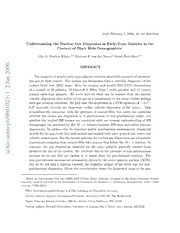
Understanding the Nuclear Gas Dispersion in Early-Type Galaxies in the Context of Black Hole Demographics

DTIC ADA459203: Increasing Replayability with Deliberative and Reactive Planning
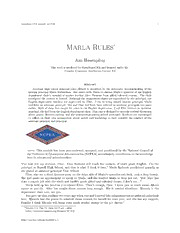
ERIC EJ1066699: Marla Rules

Parent-Infant Psychodynamics: Wild things, Mirrors and Ghosts
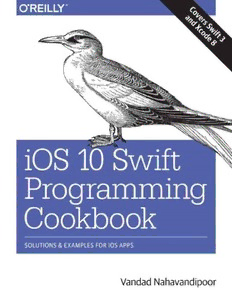
iOS 10 Swift Programming Cookbook
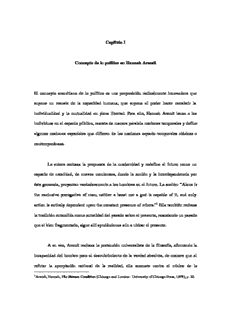
Capítulo 1. Concepto de lo político en Hannah-Arendt

Cyber Security Applications for Industry 4.0
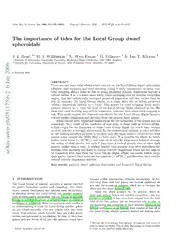
The importance of tides for the Local Group dwarf spheroidals

Consumer Behavior: Building Marketing Strategy
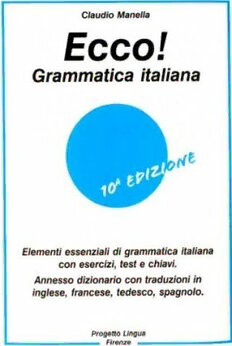
Ecco! Grammatica italiana

La Maternitat d’Elna

The World of Juba II and Kleopatra Selene: Royal Scholarship on Rome's African Frontier (Routledge Classical Monographs)

Annamaachchaaryarin Kiirttanaikal’

Tirun-et’un-taand-t’akattil Akapporul’
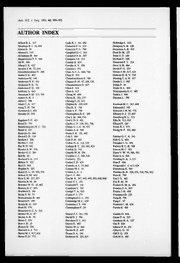
The Australian and New Zealand Journal of Surgery 1993: Vol 63 Index
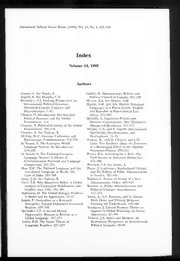
International Political Science Review 1993: Vol 14 Index

Bölüm Oku

The Georgia Historical Quarterly 1993: Vol 77 Index

